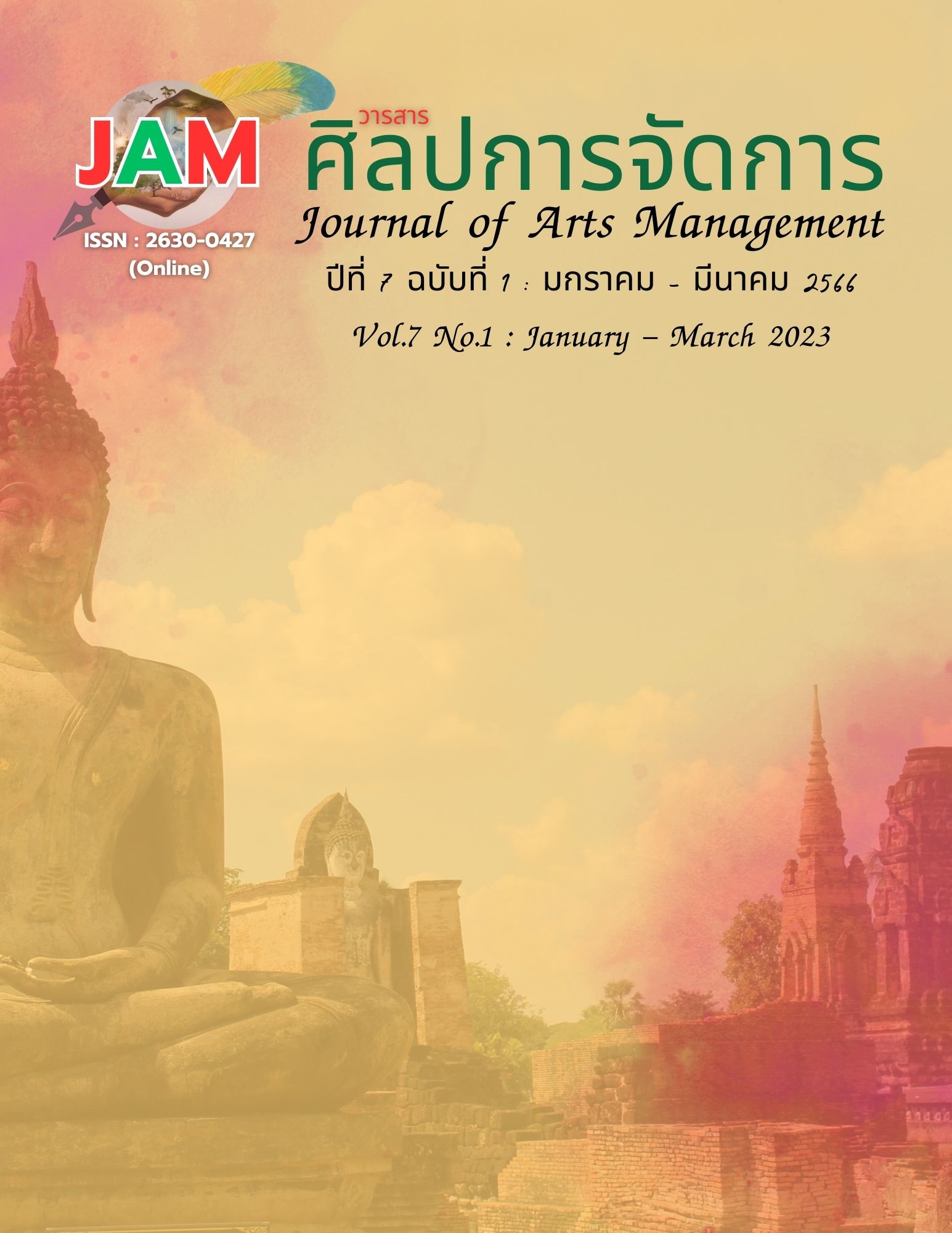Factors Affecting the Workplace Burnout under The COVID-19 pandemic
Main Article Content
Abstract
This article aimed to study relationships between factors influencing the adoption of the workplace burnout under the COVID-19 pandemic of energy business companies in the eastern region of Thailand; and factors influencing the adoption of the workplace burnout under the COVID-19 pandemic of energy business companies in the eastern region of Thailand. This research is quantitative. The instrument for collecting data was an online questionnaire (Google Form). The sample consisted of 400 employees of energy business companies in the eastern region of Thailand. The sample size was calculated from the sample-size ratio of Yamane (1967). They were selected by multi-stage sampling. analysis data by percentage, mean, standard deviation, Pearson product moment correlation coefficient, and multiple linear regression.
The research results were found as follows; 1) The most influential factors affecting the adoption of workplace burnout under the COVID-19 pandemic among energy business companies in the eastern region of Thailand were: opportunities to promote employee well-being (r.=.594) and opportunities for flexible working (r.=.555). 2) The factors influencing the adoption of workplace burnout under the COVID-19 pandemic among energy business companies in the eastern region of Thailand are the culture of participation, equality, and fairness; the strengthened role of line managers; and work hours.
Article Details

This work is licensed under a Creative Commons Attribution-NonCommercial-NoDerivatives 4.0 International License.
Views and opinions appearing in articles in the Journal of Arts of Management It is the responsibility of the author of the article. and does not constitute the view and responsibility of the editorial team I agree that the article is copyright of the Arts and Management Journal.
References
Bagnall, A., Jones, R., Akter, H., & Woodall, J.R. (2016). Interventions to prevent burnout in high risk individuals: Evidence review. Public Health England. https://assets.publishing.service.gov.uk/government/uploads/system/uploads/attachment_data/file/506777/25022016_Burnout_Rapid_Review_2015709.pdf
Bakarich, K.M., Marcy, A.S., & O’Brien, P.E. (2022). Has the fever left a burn? A study of the impact of COVID-19 remote working arrangements on public accountants’ burnout. Accounting Research Journal, 35(6), 792-814. DOI: 10.1108/arj-09-2021-0249
Bambra, C., Smith, K.E., Garthwaite, K., Joyce, K.E., & Hunter, D.J. (2011). A labour of Sisyphus? Public policy and health inequalities research from the Black and Acheson Reports to the Marmot Review. Journal of Epidemiology & Community Health, 65(5), 399-406.
Bedarkar, M., & Pandita, D. (2014). A study on the drivers of employee engagement impacting employee performance. Procedia-Social and Behavioral Sciences, 133, 106-115.
Burke, R.J., & Richardson, A.M. (2000). Psychological burnout in organizations. Handbook of Organizational Behavior, 2, 327-368.
Cooper, C.L., & Cartwright, S. (1997). An intervention strategy for workplace stress. Journal of Psychosomatic Research, 43(1), 7-16.
Department of the Energy Development and Promotion. (2021). Thailand energy efficiency situation 2021. https://www.dede.go.th/ewtadmin/ewt/dede_web/download/stat63/12_SIT_Jan-Dec%2064.pdf
Freudenberg, H.J. (1974). Staff burnout. Journal of Social Issues, 30(1), 159-165.
Hakanen, J.J., Bakker, A.B., & Schaufeli, W.B. (2006). Burnout and work engagement among teachers. Journal of School Psychology, 43(6), 495-513.
Herzberg, F., Mausner, B., & Snyderman, B.B. (1959). The motivation to work (2nd ed.). John Wiley & Sons.
Huang, S.L., Li, R.H., Fang, S.Y., & Tang, F.C. (2020). Work hours and difficulty in leaving work on time in relation to work-to-family conflict and burnout among female workers in Taiwan. International Journal of Environmental Research and Public Health, 17(2), 605.
DOI: 10.3390/ijerph17020605
Jia, Z., Wen, X., Lin, X., & Yixiang, L. (2021). Working Hours, Job Burnout, and Subjective Well-Being of Hospital Administrators: An Empirical Study Based on China’s Tertiary Public Hospitals. International Journal of Environmental Research and Public Health, 18(9), 4539. DOI: 10.3390/ijerph18094539
Maslach, C., Schaufeli, W.B., & Leiter, M.P. (2001). Job burnout. Annual Review of Psychology, 52, 397-422.
Moos, R.H. (1976). The human context: Environmental determinants of behavior. Wiley.
National Statistical Office. (2021). Labor Statistics. https://statbbi.nso.go.th/staticreport/page/sector/th/02.aspx
Prachachat. (2022, June 30). The big resignation trend: 69% of Thais do not want to increase their salary in exchange for life balance. Prachachat. https://www.prachachat.net/csr-hr/news-967002
Tucker, S.J., Weymiller, A.J., Cutshall, S.M., Rhudy, L.M., & Lohse, C.M. (2012). Stress ratings and health promotion practices among RNs: a case for action. JONA: The Journal of Nursing Administration, 42(5), 282-292.
World Health Organization. (2019). Burn-out an “occupational phenomenon”: International Classification of Diseases. 2019. World Health Organization, Geneva, Switzerland.
Yamane, T. (1967). Statistic: An Introductory Analysis (2nd ed.). Harper & Row.


